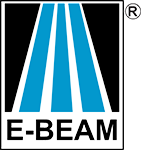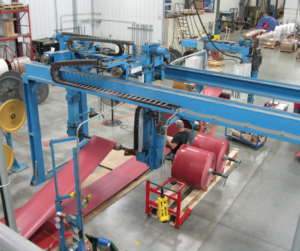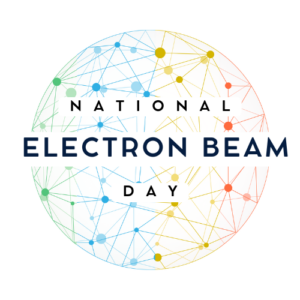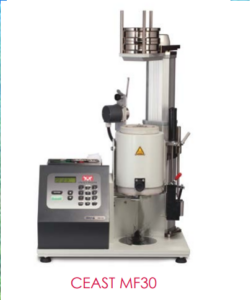In this Q&A with Tech Services episode, Technology and Development Manager at E-BEAM Services, Dan Yasenchak, discusses e-beam processing of gemstones. He explores the reasons behind this process, the methods involved, and the potential implications for the future.
Unveiling the Colors of Radiated Gemstones
The primary purpose of irradiating gemstones, particularly diamonds and topaz, is to alter their color. Dan explains, “The main reason people irradiate gemstones that are jewelry is to change color. Diamonds are what we work with largely, and the two colors that will happen are blue or red if you do an extra heat treatment step.”
While blue is the most common color achieved through irradiation, there is also the possibility of obtaining a pink hue. This opens up a world of possibilities for creating unique and vibrant gemstones that cater to individual preferences.
The Process of Irradiating Gemstones
The process of irradiating gemstones at E-BEAM Services is a static radiation process, which involves exposing the stones to a controlled dose of radiation. Dan explains, “We actually put the diamonds, in their case, on a cooling plate. It’s a water-cooled plate that has a nice flat surface. So we put it quite close to the beam. And we have it qualified, so there’s a nice even dose distribution in this area along the length and width of the beam.”
The challenge lies in achieving an even dose distribution across the gemstones. Dan elaborates, “While we scan into one direction, so that part’s very even, the other part is more of a kind of a normal distribution curve. So we can only go out so far from the center of the beam before you start seeing a drop of dose that’s, say, more than 5%. As you get obviously less dose, there’s less color change, and that all plays into the quality or the consistency of the gemstone.”
The Unique Properties of Diamonds
Diamonds, in particular, possess unique properties that make them ideal for irradiation. Dan highlights, “One of the things that work out very well with diamonds is they’re extremely conductive. They transfer that heat really well.” This conductivity ensures that the heat generated during the irradiation process is efficiently distributed throughout the gemstone, minimizing the risk of damage.
Exploring New Frontiers: Fluorescing Diamonds
While color transformation remains the primary focus of irradiating gemstones, there is ongoing research into other potential applications. Dan discussed the potential to make diamonds fluoresce and the advantages of the development in medical diagnosis, for example. This opens up exciting possibilities for utilizing irradiated diamonds in medical imaging and diagnostics, where fluorescence could enhance the accuracy and efficiency of procedures.
Qualifying the Dose: A Delicate Balance
Determining the appropriate dose for irradiating gemstones is a crucial step in the process. Dan explains, “The larger the diamond, the less dose it needs because as the light goes through the diamond, it has more of a path through that diamond. So you get to see a deeper blue or a deeper pink or red, where if it’s a smaller diamond, obviously that light goes through it much quicker. So those will tend to require a higher dose to go ahead and get that same color.”
Achieving consistency in color change requires careful consideration of the starting material. Yasenchak emphasizes, “The starting material is important. I think there’s more interest in coloring [man-made] diamonds because it can be done easier than when you used to mine them. And you go in and say, well, I don’t know exactly how it’s going to respond. I have to look at it and do a little incremental dosing.”
The Importance of Sample Size
When embarking on irradiation trials, the number of samples plays a crucial role in determining the success of the process. Dan advises, “If it’s something that you’re like, hey, I have a wide range of, say, quality standards that I want to see what it looks like over an array, then you’re going to need to send more samples in that case.”
However, the number of samples should align with the desired outcome. Dan adds, “If it’s something where you go and say, our production volume is going to be 50 stones, that may not be worth it in the end. To go ahead and go through the qualification process and all that. As opposed to, oh, no, we can go ahead and do a shipment of something more like 500 stones or something like that, where it can make more sense financially.”
The Permanence of Color Change
Once irradiated, the color change in gemstones is practically permanent. Dan assures, “If you go work at, like, a steel plant and you get exposed to really hot temperatures, it would still actually be okay. It’s if you drop it in something particularly hot [that’s the problem]. It can reverse with very hot temperatures. But not anything that you’re normally going to see.”
The Turnaround Time
For those eager to witness the magic of color transformation in their gemstones, the turnaround time is a crucial factor. According to Dan, “A standard turnaround is still two weeks or often less. We ask for advanced notice of about three weeks so we can go ahead and make sure we’re scheduling appropriately.”
The Future of Irradiated Gemstones
As technology continues to advance, the possibilities for irradiated gemstones are expanding. Dan concludes, “Understanding the real need of the customer is such an important part because there are ways we can be flexible in what we do.” With ongoing research into fluorescence and other potential applications, the future holds exciting prospects for the world of irradiated gemstones.
If you want to learn more or discuss a trial run, submit a form or book a free call here!
Timestamps
[0:01:10] Purpose of irradiating gemstones
[0:02:30] Process of irradiating gemstones using static radiation
[0:05:25] Qualifying the dose of irradiation for gemstones
[0:08:49] Predictability of color change in irradiated gemstones
[0:09:00] Number of samples needed for testing
[0:10:39] Color change in irradiated gemstones is permanent
[0:11:24] Considerations for cost and volume in irradiating gemstones
[0:13:39] Turnaround time for irradiating gemstones




